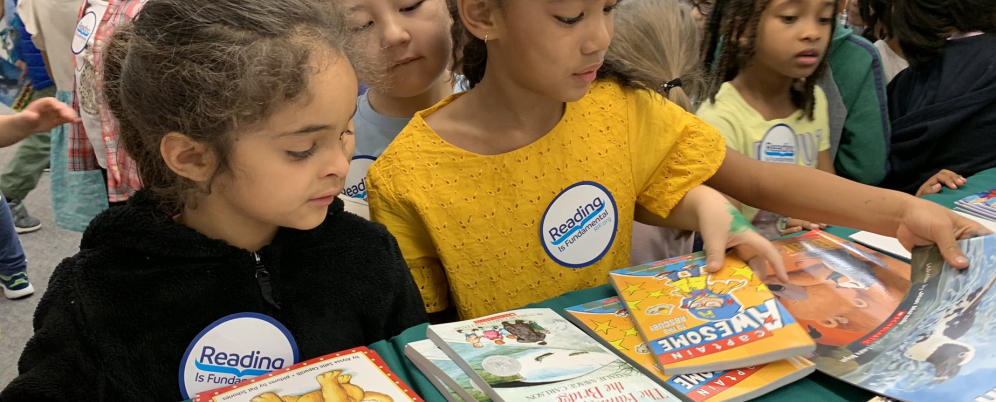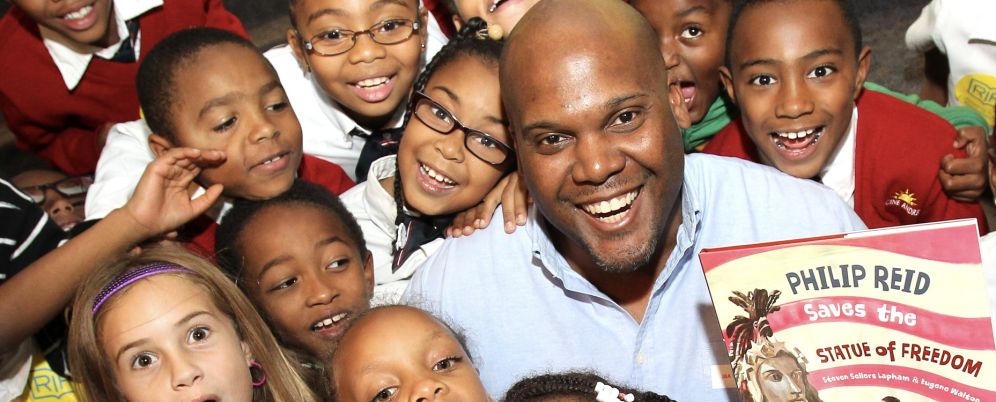How Graphic Novels, Choice, and Read-Alouds Can Improve Middle School Literacy
Through the power of reading, students build confidence, curiosity, and a sense of connection that helps them navigate their world. At Reading Is Fundamental (RIF), we are committed to providing educators with resources and insights that spark this growth, especially for middle school learners who need meaningful, relevant opportunities to engage with books. Dr. Dowan McNair-Lee, Assistant Professor of Teacher Education and Urban Education at the University of the District of Columbia and member of RIF’s Early Childhood Education Advisory Board hosted the recent webinar Every Book Is a Middle School Book, strengthens this effort by bringing expert perspectives into the classroom. Read on as Dr. McNair-Lee shares strategies to empower middle school readers through choice, engaging formats, and supportive literacy experiences.
Before becoming a tenure-track professor, I spent most of my professional career in the middle school ELA classroom. I delighted in reading with and to my students, and loved their reactions to text from their shrieks of horror when I read Poe or their squeals when Beneatha finally told off her family in A Raisin in the Sun. This joy was dampened when I saw the most recent NAEP reports that show that 8th grade literacy levels have not rebounded from their pandemic-lows. How can we help middle school students excel in reading and begin to appreciate texts in ways that will grow their love for reading?
In 2024, the average reading score for the nation at grade 8 was 2 points lower than 2022 and 5 points lower compared to 2019 (NAEP, 2024). Despite post-Covid funding for high-impact tutoring and other investments in literacy education, students are not bouncing back from pandemic levels.
The middle school literacy crisis has several causes. Researchers point to variables such as the prior focus on balanced literacy in elementary schools, a lack of discipline-specific literacy instruction, the Covid-19 pandemic and a dearth of effective and applicable professional development for middle school teachers.
While I believe all of these are valid, I think one important point is left out of the various conversations. Middle school students do not have enough time or opportunities to read books that they choose.
I’ve had the opportunity to have some casual conversations with middle school-aged students about reading, and some of their comments surprised me. So, let’s chat about how middle schoolers want to engage with books.
Middle schoolers are attracted to anime and manga because of the non-linear text and graphics that engage readers and provide visual cues. How can we integrate more anime, manga, and graphic novels into our curriculum? One way to do this is to provide alternate readings for topical subjects. One year, I was tasked with teaching students about the ancient kingdoms of Mali, Songhai and Ghana. I was able to secure a graphic novel about the legend of Sundiata, a legendary king of that region. I placed the book on my desk and told my students that they could check it out. The book never touched my desk again! Students were so excited to see the historical accounts come alive within the pages of the graphic novel that I sought to find books for other topics. My co-teachers and I secured graphic novels to accompany required readings about the Revolutionary War and other topics.
Middle school-aged readers want to read! But they often don’t have time or don’t know how to pick a book that works for them. This is where teachers and school staff come in. We can do book commercials where we advertise books that are new (or new to our students). The rise of “Booktok” and other social media spaces where books are discussed provide a lot of opportunities to hear snippets from authors and readers about books. Schools and teachers can also sponsor book contests and challenges that are not linked to grades. Kids also need to see their teachers reading and like to hear their teachers talk about what they are reading.
Sometimes kids need help finding the right book. However, middle school aged kids don’t necessarily want to read books about kids who look and sound just like them. Rather, they want the text to feel relevant to their own lived experiences (Sciurba, 2025). Exposing middle school students to texts that reflect who they are as individuals while respecting their sociocultural status is important and should be the responsibility of all the adults in a student’s life, not just the teacher.
Finally, middle school-aged students want to be read to. Yes! Middle school students want to hear the words on the page come alive. This piques their interest in texts and makes them excited to dive into a new or unfamiliar book.
So, let’s commit to finding ways to connect our middles to great books. They deserve it.
Dr. Dowan McNair-Lee is an educator, literacy scholar, and Assistant Professor of Teacher Education and Urban Education at the University of the District of Columbia. A former DC and Prince George’s County public school teacher, she has taught elementary and middle school ELA, gifted education, journalism, and literacy assessment at the undergraduate and graduate levels. Dr. McNair-Lee's scholarship and teaching reflect her passion as a writer, mentor, and advocate for equitable literacy instruction.
Get Inspired—Read RIF's Blog
Stay connected with the heart of our mission by exploring our blog. We feature stories from communities we serve, literacy tips for educators and families, and updates on how Reading Is Fundamental is helping children across the nation discover the joy of reading.

